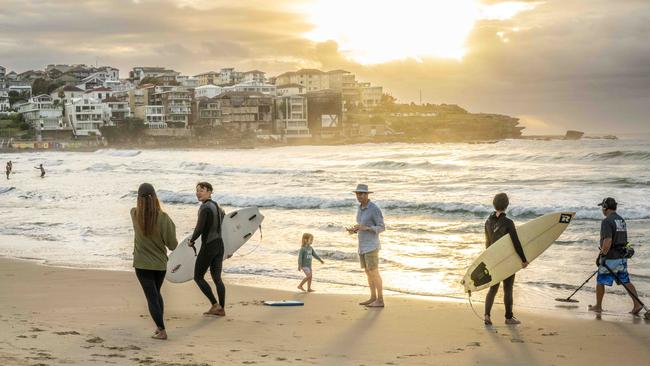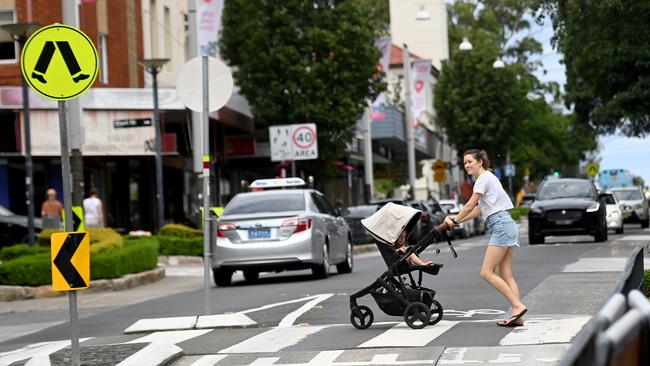Inner Melbourne and Sydney suburbs losing families, workers
Housing affordability is changing who lives in the inner suburbs of our big cities. Find out if you live in a suburb where the demographics are rapidly shifting.

The fashionable inner eastern suburbs of Sydney and Melbourne are hollowing out, their populations falling over the past four years as working-age families are priced out of the property market and increasingly pushed to the outer ring.
By contrast Brisbane and Perth have recorded booming growth in millennial workers in their inner suburbs since 2019, an analysis from KPMG Australia finds, making them increasingly attractive to national and global companies looking for a business base.
But all capital cities have one common trait: a steady decline in young children living in the premium residential areas as families deal with high housing costs.
The KPMG study reports a 2.5 per cent fall between 2019 and 2023 in the number of prime worker-aged people (20-64 years) across the eastern suburbs of Sydney and Melbourne, even though Greater Sydney experienced a 3.7 per cent population rise and Greater Melbourne 4 per cent.
Perth’s inner suburbs have recorded a 6.7 per cent rise in the 20-64 age cohort, and 8.2 per cent for Brisbane.
Amid the current debate about housing affordability, the flow of working-age people, families in particular, to the outer regions of Sydney and Melbourne is leaving the inner suburbs looking increasingly grey, KPMG urban economist Terry Rawnsley said.
“Despite being areas with exceptional access to jobs and excellent local infrastructure, inner city suburbs of Melbourne and Sydney are seeing a decline in population simply because young people can’t afford to live there,” he said.
“Families are increasingly moving to greenfield areas, where although residential land is more available, there are significant challenges in accessing essential services and employment opportunities. As workers move farther from city centres, the strain on transport and local infrastructure in suburban areas intensifies.”
Mr Rawnsley said there were also local effects, with small neighbourhood businesses in inner areas struggling to find younger workers.
At a more granular level, there have been overall population declines in Sydney’s eastern suburbs, inner west and lower north shore and in Melbourne’s leafy east in the past four years.
The inner-west Sydney suburb of Leichhardt has recorded a 2.7 per cent population fall since 2019, losing a net 1616 people. There are 795 fewer people under 20 and 1332 aged 20-64, partly offset by 511 more 65+ residents.
This compares with a 51 per cent increase in the population of greenfield suburb Rouse Hill in Sydney’s northwest, which has added 23,200 people in the past four years, mostly working-age families.

More than 100,000 people have moved into Rouse Hill, Blacktown North and Bringelly-Green Valley since 2019, of whom more than 90 per cent are working-age people with children.
Melbourne’s Stonnington West area, which takes in South Yarra, Toorak, Prahran and Armadale, has lost 3.3 per cent of its population, almost entirely children and working-age people. If neighbouring Boroondara (Hawthorn, Kew, Canterbury and Balwyn) is added, overall numbers have declined by almost 7500 people even though there are 1340 more people aged 65 and over.
Bayside areas such as St Kilda, South Melbourne and Williamstown have also recorded declines, while the outer ring areas of Casey and Melton have had the biggest increases.
Bucking the trend is Brimbank in Melbourne’s outer west, which saw the biggest population decline of any region over the four years.
“Areas like Brimbank and Dandenong in Melbourne, along with Bankstown in Sydney, had significant numbers of big migrant families, many of whom took advantage of the low interest rates during Covid to buy a house in greenfield suburbs,” Mr Rawnsley said.
In Brisbane, the working-age population of prime inner city areas such as Newstead, Bowen Hills, Paddington and Morningside have substantially grown since 2019. “Younger people bring a vibrancy and liveability which only helps to attract more people to Brisbane,” Mr Rawnsley said.
In Perth, areas such as Claremont, Subiaco, and Northbridge recorded population surges.
The numbers accord with Australian Bureau of Statistics data released last week that found Queensland and Western Australia had the most interstate migration in the year to March, with NSW losing the most people.







To join the conversation, please log in. Don't have an account? Register
Join the conversation, you are commenting as Logout